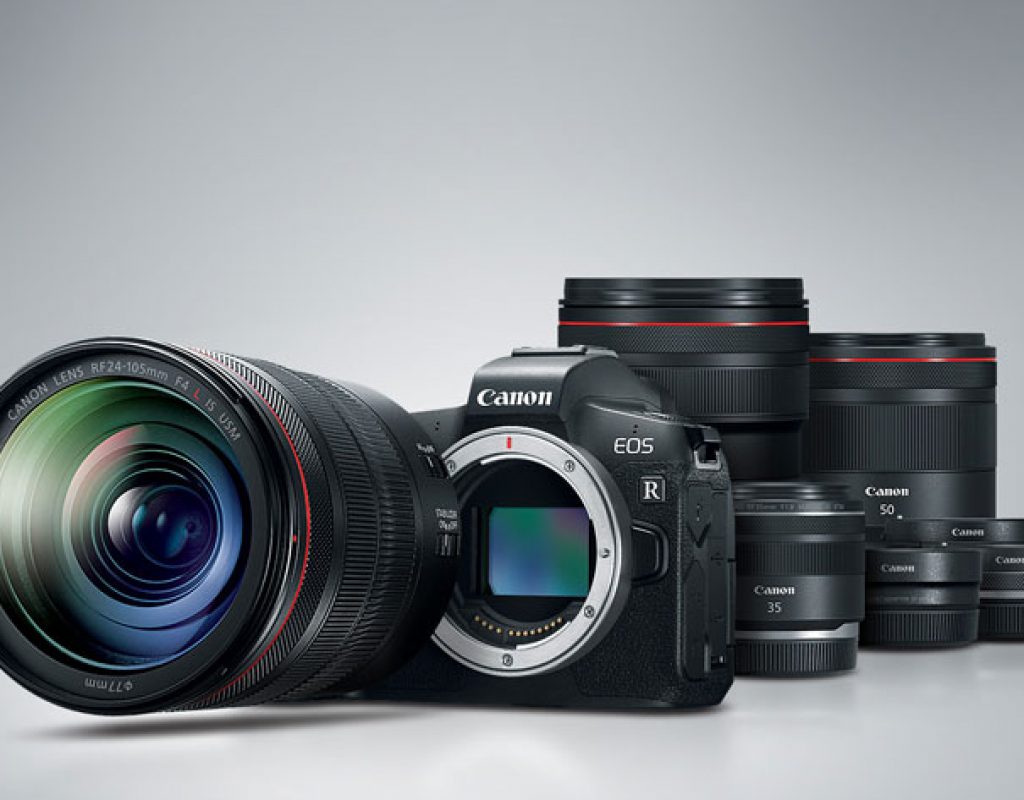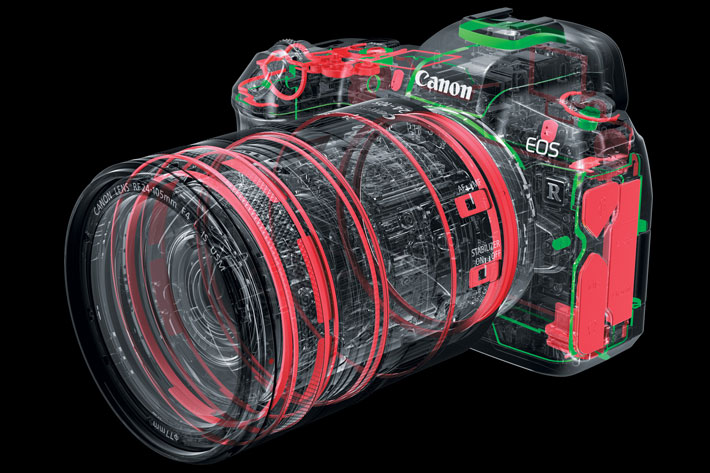
Featuring the fastest AF speed in the world, the Canon EOS R offers 4K UHD video up to 30fps and allows to record in 10-bit 4:2:2 with an external recorder. It’s a first for Canon’s first single-lens non-reflex!
Canon enters a new era with its first camera of a new system. The new Canon EOS R full-frame mirrorless camera features a 30.3 megapixel CMOS sensor that is powered by the Canon’s latest image processor, DIGIC 8, enabling shooting at up to 8.0 frames per second. The new camera inherits a lot from Canon’s legacy in both EOS and Cinema EOS. Video storytellers can capture 4K UHD video up to 30fps (no 60fps, maybe for the next R) and record in 10-bit 4:2:2 with an external recorder or record internally at 8-bit 4:2:0. The EOS R also comes with the ability to shoot Canon Log, providing 12 stops of dynamic range, minimal loss of detail in shadows and highlighted areas and an increased range of choices when color grading.
https://youtu.be/Oy5Lh078WT4
Before you ask, 4K UHD uses an area in the center of the EOS R sensor, so what you get is a resolution of 3840×2160 from the full frame 6720×4480 sensor. Cropping is automatic for 4K video or when EF-S lenses are used. Canon says that “Movie Cropping can be enabled in the menu, producing a Super 35mm-like resolution. While cropping is automatic for 4K and EF-S lenses, Movie cropping allows for the use of lenses incapable of covering the full frame sensor.” The Focus Guide from Canon’s Cinema EOS cameras is also present, for those who want manual focus, and the EOS R also has focus peaking. The distance to the subject is also shown on the display.
https://youtu.be/Gv7aKysmtS0
The fastest autofocus speed in the world
Canon knew how important it was/is to allow users to keep their collection of lenses, so, according to the company, “all EF and EF-S lens are compatible with the camera. In order to do so, photographers and videographers can choose between using one of three new mount adapters, each uniquely designed to meet the individual needs of the user.”
“There has never been a time in history in which visual expression has been so prolific. Imaging, both still and video, are the communication mediums of today’s society. Much in the same way we learned to type in the past, today’s youth are skilled in shooting, editing, and visual storytelling in ways that only the masters of each craft were decades ago,” said Kazuto Ogawa, president and chief operating officer, Canon U.S.A., Inc. “Knowing this, we needed to step back and design a system that delivers all the creative expression and functionality today’s youth crave, now and in the years to come.”
https://youtu.be/WVAY3mzIges
The new Canon EOS R camera features an improved Dual Pixel CMOS Auto Focus with 5,655 manually selectable AF points, supporting AF at up to f/11 with a 384 zone (24×16) real-time metering system. With f/1.2 lenses, the camera boasts AF sensitivity in low light in as little as EV-6. When using the RF 24-105mm F4 L IS USM lens with the EOS R, the camera can focus in as little as 0.05 seconds with Dual Pixel CMOS AF, making it the fastest autofocus speed in the world. These features provide photographers and videographers with Canon’s most advanced AF system to date. The EOS R also features a silent shutter setting when shooting in single-shot mode; an important feature for those who need to capture imagery without disrupting the scene. An upcoming free firmware update will enable silent shutter in continuous shooting mode as well.
“The EOS R system is not just a new camera or a new lens mount, it is a new design that will allow us to produce visual tools that were previously impossible, and allow our customers to tell their stories with greater depth, richness of color, and creative flexibility, in optically stunning ways.” states Kazuto Ogawa.
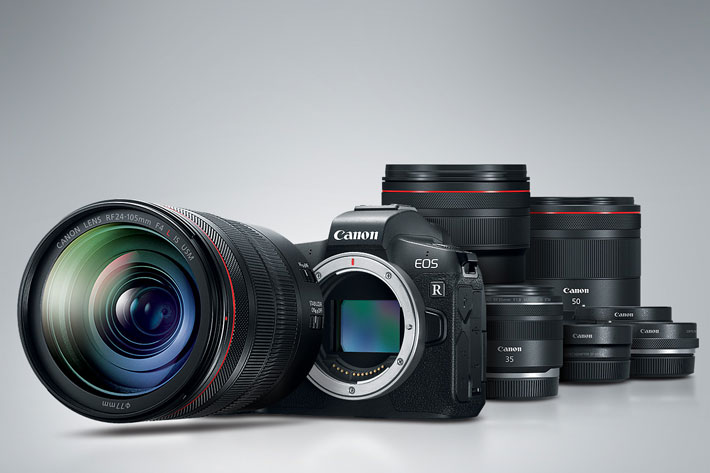
When Canon set forth to develop a new interchangeable lens camera system, they focused on three core optical principles: high-image quality, high-specification performance, and compact design. Fashion photographer and Canon Explorer of Light Lindsay Adler, one of the first professionals to try the camera, said “I was instantly impressed with how quickly the EOS R was able to focus. Whether my subject was moving or I was shooting in near-complete darkness, I had no problem getting tack-sharp focus in every shot. It was a relief to know my gear wasn’t going to hold me back from executing my vision, but instead it would really help me to execute this vision.”
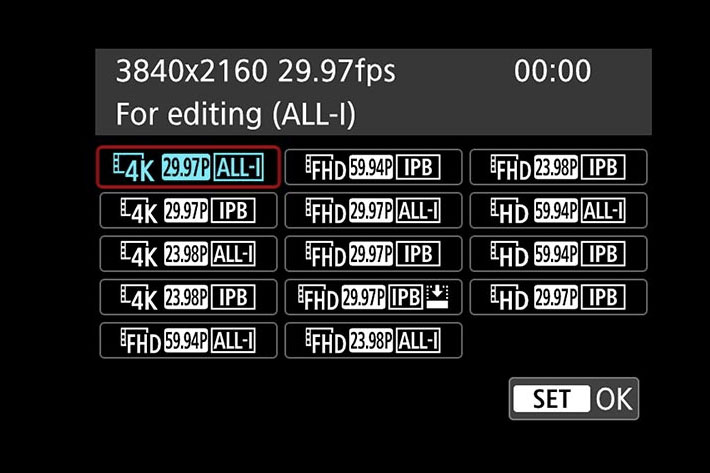
Apparently, the first users are also happy with the dimensions of the camera. Outdoor photographer and Canon Explorer of Light Jimmy Chin said “the new EOS R system for me in particular is very useful for the kind of shooting that I do in the mountains, where I need to worry about the size and weight. Having the option to use the new RF lenses or the EF lenses is really great” and Devin Graham, director and filmmaker behind YouTube’s DevinSuperTramp added that “the new EOS R will become one of our main cameras. It has a very small footprint, yet is able to create amazing images. As for the lenses, the new RF 28-70mm F2 has just become one of my all-time favorites. I’ll be bringing it on every project.”
https://youtu.be/ZPWKz1n83Kc
The new Canon EOS R has some new features, like the Multi-Function Bar, placed just to the right of the EVF, which allows users to more easily access their customizable settings, such as AF, ISO and White Balance. Users will have the option to either slide or tap the bar to gain access to the settings and adjust on-the-go as they deem necessary depending on each particular shooting situation. The new Control Ring present on the R-mount lenses will also allow user to adjust some settings. And users of older lenses will not be left behind, because when a compatible EF or EF-S lens is attached to the EOS R camera via the adapter, Control Ring functionality is made available to the EF/EF-S lens they’re working with.
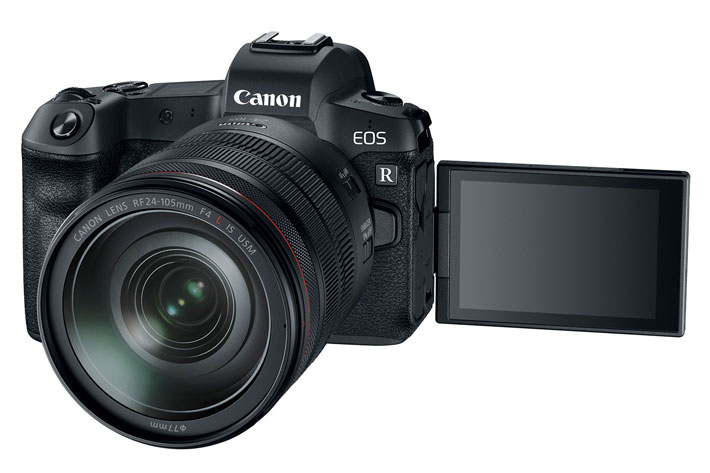
No IBIS, but 5-Axis Image Stabilization
There are some new tricks to learn even if you’re a Canon user coming from a DSLR, as the EOS R introduces a series of new features and functions. There are new things, like the Flexible-priority AE or Fv mode (which looks very much like the Hyper-program mode from Pentax, something I’ve to check further), or the Eye-AF so many asked for, but there is also only one UHS II SD card slot (I remember the days we could only have one film inside the camera…), and, what to some seems like an essential feature, no IBIS. Yes, no IBIS! But there is 5-Axis Image Stabilization, believe me! Just continue reading.
When Panasonic introduced its GH5s, in January 2018, without IBIS, many claimed that the company was reducing its market demographic, by ignoring hand held shooters, this despite the fact that the company presented technical reasons to remove the technology, which was introduced by Sony, and has been prevalent in mirrorless systems for a decade.
We wrote then that while some defend that IBIS is much needed and others claim that it can cause problems with some setups, and that’s the reason why Panasonic removed it, the discussion continues to this day, and will, no doubt, return now with the Canon EOS R, which, as all other Canon cameras, does not use IBIS.
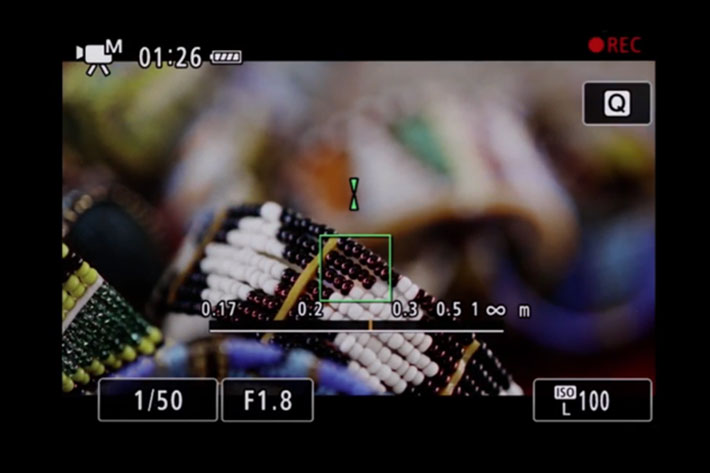
IBIS as is usually called, or “In Body Image Stabilization” is a technology introduced by Sony – which the company effectively calls “5-Axis SteadyShot INSIDE Stabilization” -, that uses a floating sensor inside the camera (Minolta and Konica/Minolta first introduced the idea). Canon uses image stabilization on its lenses, and the company has always claimed that it works better, as IS can be adapted to different lenses. Apparently, with longer lenses, the results achieved by Canon’s IS are better than using IBIS, which, again some suggest, works fine for smaller focal lengths. That may explain why many Sony lenses have OSS or Optical SteadyShot, from the white Sony FE 100-400mm F4.5-5.6 GM OSS introduced in 2017 to the Sony E 18-135mm F3.5-5.6 OSS launched January 2018… and many others. According to some, the benefits of lens OSS supposedly start as early as 35mm FL.
Still, the tests available are not conclusive – despite the fact that from both sides of the barrier “specialists” claim so – and the battle continues. Some claimed that Canon could not use IBIS with a DSLR, and so that’s why the company did not use it, but now they will have to eat their own words, as Canon has developed the EOS R, a mirrorless, and still does not use IBIS but IS. Maybe because the EOS R, according to Canon, is not a mirrorless, but a “single-lens non-reflex camera”. Has Canon just created a new genre, the DSLNR?
https://youtu.be/iQ8w9DlTW2w
The Panasonic GH5s does not use IBIS because of a series of reasons. According to Yosuke Yamane-san, the head of imaging at Panasonic, “since our lenses are internally stabilised, we think it will be enough. When used handheld under low light conditions, a gimbal will be used by many customers. So we think there is no problem if no body IS is provided.” There is more, though: Panasonic removed IBIS because there was no space for it, due to the dimensions of the new sensor used, and also to avoid unwanted interactions between a floating sensor and the dollies and gimbals pro shooters tend to favor.
So, Panasonic did not cripple the GH5s on purpose, a series of reasons made removing IBIS a logic choice. With the Canon EOS R, the discussion will continue, but in Canon’s case, IBIS has never been used, because Canon believes in IS on the lens… as does, apparently, the head of imaging at Panasonic. Besides, Canon says that with the new body, the EF lenses will work even better.
https://youtu.be/KFu2B-MTN8s
EF and EF-S lens gain new features with EOS R
In fact, the EOS R system is designed for full, uninhibited compatibility with all existing EF, EF-S, TS-E and MP-E lenses through the use of mount adapters (when attaching an EF-S lens via any of Canon’s new R-series mount adapters, the new EOS R automatically switches to APS-C crop mode). In addition, through the use of the optional Drop-In Filter Mount Adapter or Control Ring Mount Adapter these lenses, in fact, gain functionality, as I mentioned above. Left out of the equation is the EF-M mount, which may indicate the system does not have a future, but I believe it is better to wait for Canon to make the next move. One thing the EOS R system suggests: EF and EF-S are to continue, meaning Canon is not leaving the DSLR world or even the APS-C format. One question here: will there be a APS-C mirrorless, or it simply does not make sense?
As I mentioned in previous articles about Nikon’s Z system and the first rumors on Canon’s EOS R, Canon’s new RF mount features the same diameter size as the EF mount (54mm) – which made it easier to keep the connection to the existing lenses – and introduces a shorter back focus distance. This allows for lenses to sit closer to the sensor (the focal plane) and allowed Canon optical engineers to reimagine lens design utilizing larger rear lens elements to produce an image on the full-frame sensor. This new optical formula has paved the way for higher performing lenses. In addition, the Canon RF mount features a high-speed 12-pin communication system that provides faster and more in-depth communication between the camera and lens over existing Canon mount systems.
https://youtu.be/NbR5dcAczGI
Recognizing that optics is the foundation for any camera system, the RF mount was conceived to open new doors in optical design… and keep the bridge to the past. The information available now indicates that while compatibility between new and old systems is many times limited, Canon tried – as Nikon did with the Z mirrorless – to keep full compatibility as a key element of development.
Last notes on the EOS R here: answering the demand for enhanced mobile editing of RAW image files, Canon is also announcing a new application, Digital Photo Professional Express (DPP Express). In combination with an updated Canon Camera Connect App, DPP Express enables users to send, view, edit and process CR3 RAW files on their iPadvii. A free download of the app will be available October 2018.
The Canon EOS R full-frame mirrorless camera – and now we know the R stands for… Revolution – is scheduled to be available in October 2018 for an estimated retail price of $2299 for the body only. It will also be sold as a body-and-lens kit with the new RF 24-105mm F4 L IS USM lens for $3399.
We’re living in interesting times, and the EOS R is a sign of what to expect for the coming months. Panasonic will have a full frame of their own this month too, and it will be interesting to see what it brings to the market and, to keep the discussion open, if it uses IBIS.
https://youtu.be/oSahgVI7KQI
Movie Digital IS
I left the IBIS final notes to the end, because the Canon EOS R does have 5-axis image stabilization, although the company calls it Movie Digital IS. In fact, it’s not even new, and recent DSLRs, starting with the EOS 77D have it. Canon felt the need to offer video recording shooters a stabilization solution to correct the movements in different directions, and introduced a 5-axis stabilization, performed electronically. The sensor does not move, the image moves on the sensor. Movie Digital IS works in tandem with the IS from lenses having the feature, and works independently with lenses without IS, being activated by the user in the menu.
I believe the above information is important if you’re shooting video. Brent Ramsey, Canon Technical Advisor for the company’s motion picture equipment, says that “the EOS R includes Movie Digital IS offering 5-Axis Image Stabilization, which along with distortion correction during recording, make for a powerful combination of in-camera image correction tools” and adds that “when a lens (such as the new RF 35mm f/1.8 Macro IS USM) that supports Combination IS is attached to the camera, the in-camera Movie Digital IS and in-lens optical IS work in tandem via high-speed data transmission, to provide powerful Image Stabilization. This is referred to as Combination IS. When a non-IS lens is used, the camera’s 5-axis electronic Image Stabilization feature operates alone, suppressing camera shake to produce stable movie clips.”
So, after all, there is some form of “5-axis electronic Image Stabilization” present in the EOS R… Now Canon only has to explain if there are any limitations to its use with some of the lenses available.

Filmtools
Filmmakers go-to destination for pre-production, production & post production equipment!
Shop Now